Menu
Root Rot on African Violet Plants
Root rot on African Violet plants can unfortunately occur when we are overzealous with watering African Violets. Over-watering can permanently damage African Violet roots and lead to the plants death.
These are common questions answered about African Violet root rot:
What is Root Rot?
- Root rot begins with the outer tertiary or secondary roots.
- At the tip of the tertiary roots are present thin hair like structures known as rootlets.
- These rootlets are barely visible to the naked eye.
- These rootlets are responsible for water absorption from the soil.
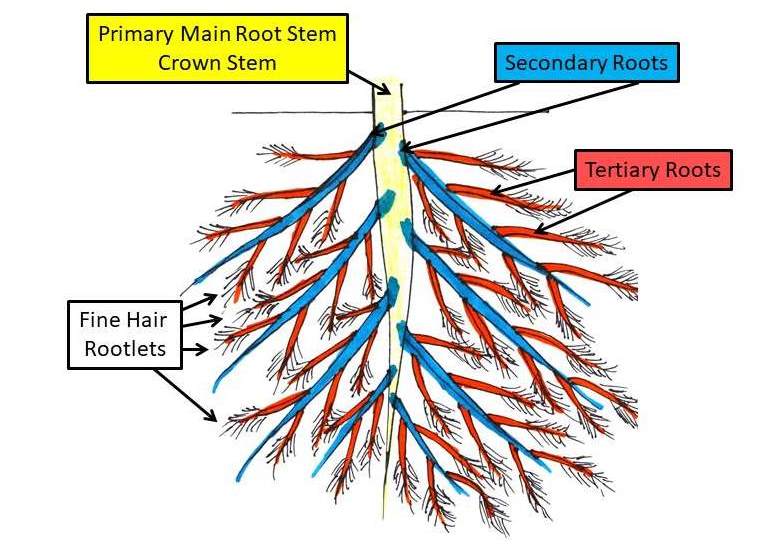
- Rootlets form the main part of the root ball and are intertwined and surrounded within the soil.
- If there is too much water retention in the soil, the rootlets will start to absorb this water and transport it to the tertiary and secondary fine root hairs/ roots.
- From there the water travels to the primary main root stem or crown stem.
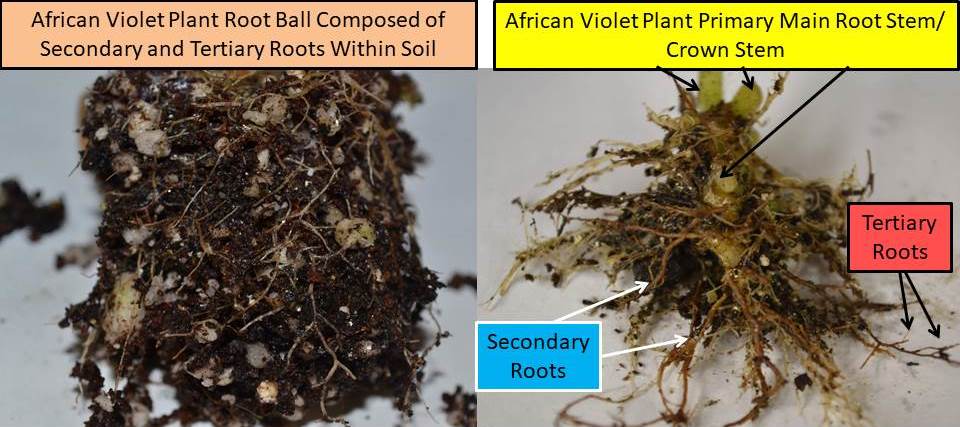
- If the water in the soil mixture is too much, the rootlets will get clogged with water and start to rot first.
- This root rot then spreads to the tertiary and secondary root hairs/roots and finally the main primary stem or crown can be susceptible to root rot at the end.
- Visually first the tertiary and secondary roots will look brown, soft and mushy, then these characteristics can spread throughout the root system till the crown looks brown, soft and mushy.
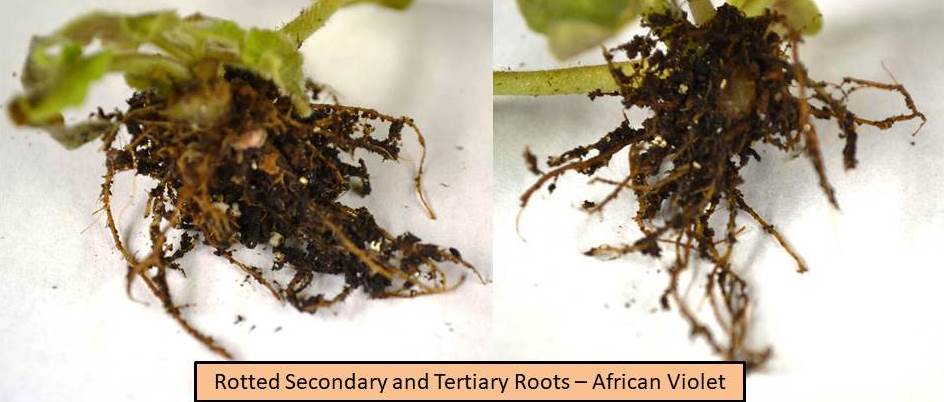
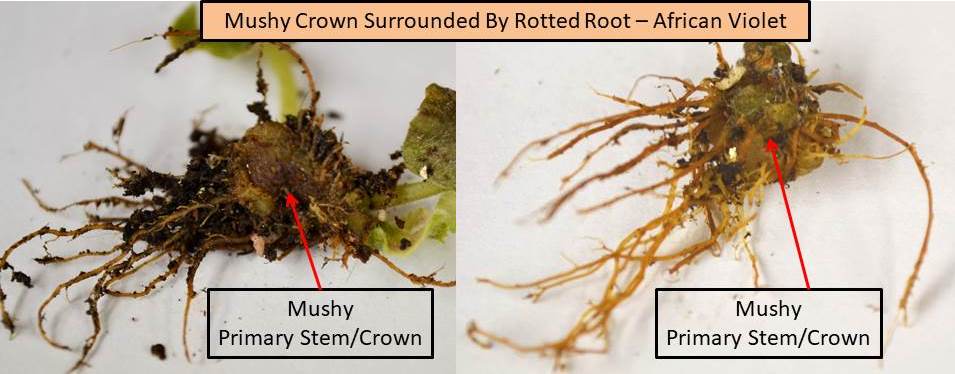
- Root rot of the primary stem starts at the bottom of the crown/stem and moves up towards the center of the crown/stem to the top of the plant causing it to droop down or fall off in extreme cases.
- In normal plants, these roots will be white or grey in color, not dark brown.
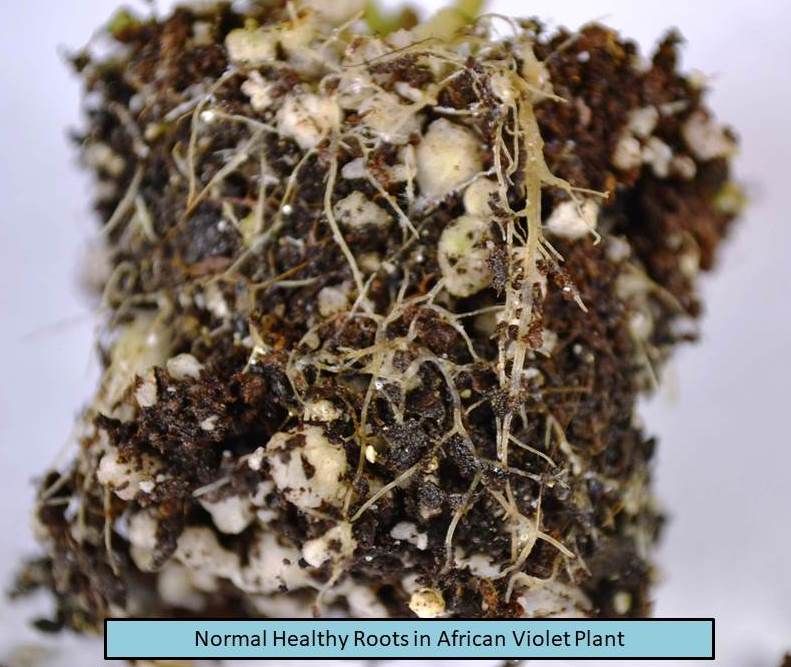
What Causes Root Rot and How Does It Occur?
- Usually an over-watered plant can lead to root rot. For more tips on watering African Violet plants, can visit blog post, “How to Water African Violet Plants?“
- If the soil mixture in which the African Violet is planted, is too dense, then the water can clog up the roots and not drain out easily. This overtime can lead to root rot.
- Heat can also lead to root rot.
- If the plant environment is too hot during the day and cold at night, this change in temperature can affect the roots of the plant.
- If the evenings are cold, and plants are watered in the evenings, this can cause root rot, as the cold water can shock the roots.
- During the hot summers, the soil can dry out fast and even with diligent watering, the fast drying out of roots can lead to root rot.
- Root rot can also occur if the plant is exposed to a stressful environment of changing soil conditions.
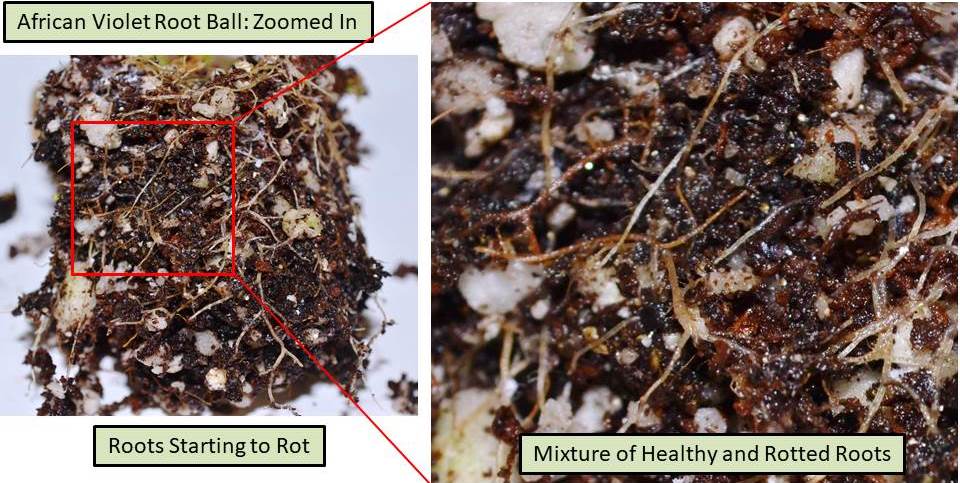
- If the soil undergoes a cyclic change in moisture conditions, with first too dry soil, then over watering, then again allowing the soil to dry out again it can lead to root rot.
- These changes of dry/wet/dry soil are too stressful for the roots, leading to a weaker root system and eventually root rot.
- African Violet plants need adequate drainage, if they are planted in pots with limited or no drainage, root rot will occur.
- For tips on wick watering African Violet plants, can visit blog post, “Wick Watering for African Violet Plants“.
African Violet, coco coir and other potting mixes shown below:
What are the External Plant Symptoms of Root Rot?
- The leaves will seem to droop down and the leaf stems of the bottom leaves will become brown and mushy.
- The leaves may also become mushy.
- The leaves will start to seem faded in color.
- The leaves will not be firm, but soft and droopy to touch, seem wilted in appearance.
- For other reasons, why African Violet leaves turn brown, can visit blog post, “Brown Leaves on African Violet Plants“.
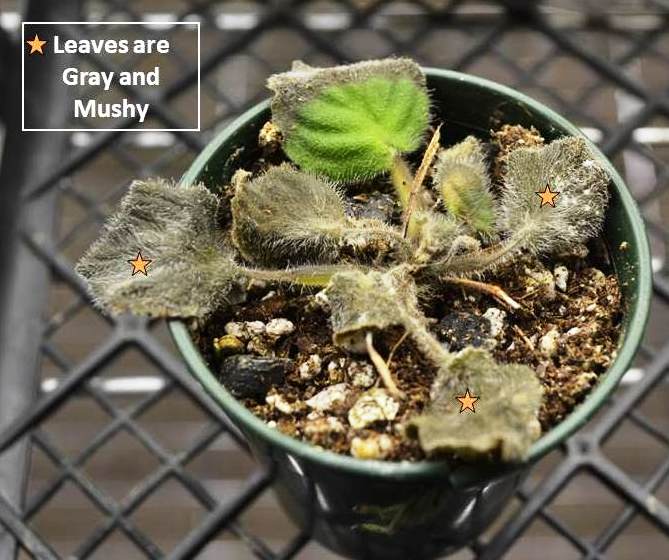
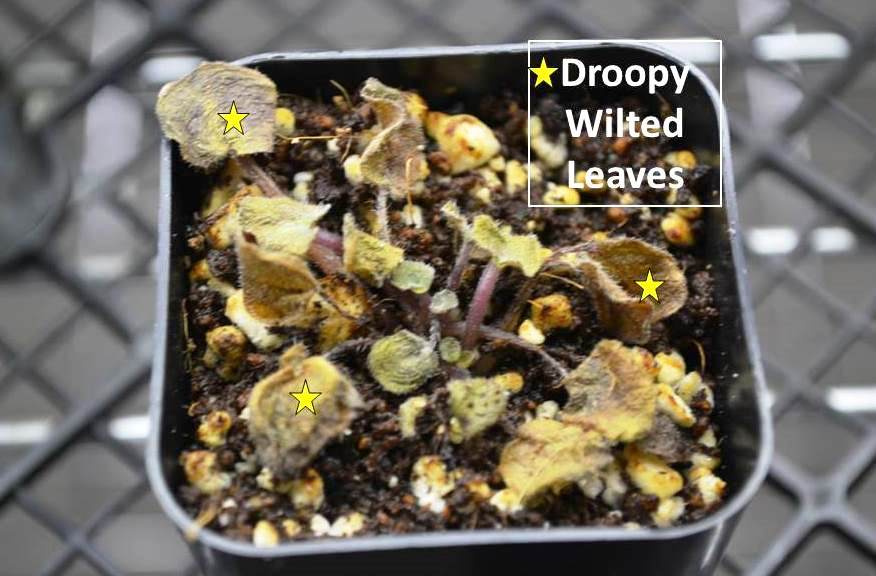
What are the Internal Plant Symptoms of Root Rot?
- First when you remove the plant from the pot, if the soil is wet, along with mushy leaves, that’s a first tell tale sign that root rot may be present.
- Next, gently clear away little bit of the soil from root system, just enough to check the tertiary/secondary roots growing from the sides of primary main root stem.
- If they are brown in color and soft mushy to touch, then those tertiary/secondary smaller roots have root rot.
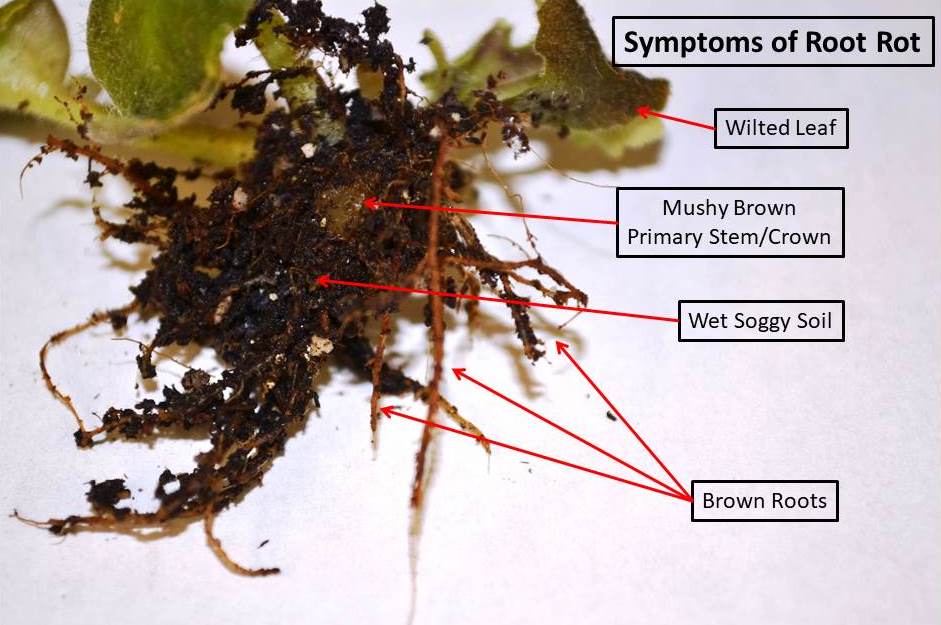
- The next step is to check the primary main root stem.
- If this feels soft and mushy to touch and looks dark brown in color, then the main primary stem is rotted from the inside too.
- For further inspection of the root rot, can slice off the plant stub, when the sliced off stub is dark brown in the center and around, the plant tissue is rotten.
- The inside tissue of the stub should light green to reddish in color.
Can Root Rot Be Reversed?
- No, it cannot be reversed. One the root is rotted, dark brown in color, soft and mushy, it is gone forever. There is no way to revive this root.
- If only the small roots sticking out from the side of the main root stub are dark brown and the stub is still firm to touch, dry and light brown in color it can still be saved.
- If the inside of the stub is green-reddish in color, it can also be saved.
- If only a few roots are brown in color and the other remaining roots are still firm, gray/white in color, then this African Violet can be saved from root rot.
- You can trim away the brown rotted roots leaving the healthy roots and repot this violet in a light airy barely moist soil.
- To prevent future root-rot, when potting up the plant, can add a thin layer of perlite at the bottom of the pot, to provide adequate drainage.
- Also plant the African Violet in a light airy soil mixture containing 50% peat moss and 50% perlite.
Can I Save an African Violet Plant Dying From Root Rot?
- Yes, you can save an African Violet plant from dying from root rot, depending upon the stage of root rot.
- If its in its early stage and only the outside smaller roots are dark brown, you can gently trim these roots using sharp scalpel/scissors.
- Gently trimming away the rotted roots, can prevent the spread of root rot.
- Make sure to leave behind enough healthy grey/white roots for the plant to survive.
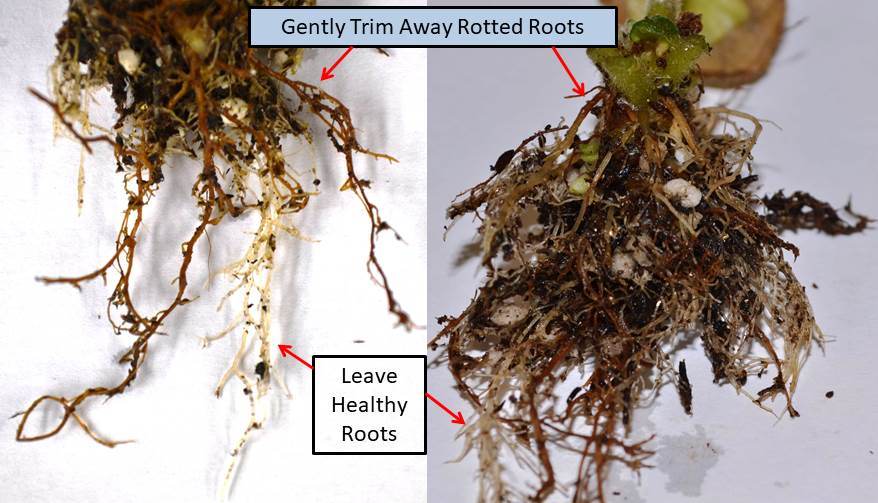
- If externally the stub looks moist, dark brown and feels soft and mushy , then it’s best to slice off the soft mushy part of the stub using a sharp scalpel until you reach a point where the stub is dry /green-reddish in color and firm to touch.
- Once you have sliced off the dark brown mushy stub and are left with at least 1/3” of good plant stub, you can re-pot this stub.
- For more information on re-potting African Violet bare stems/stubs, please visit our post, “How to Bury and Re-Pot African Violet Bare Stems or Necks?“.
How to Remedy Root Rot in African Violet Plants?
- First visually inspect the root system. If maximum number of roots are dead/old/ mushy and dark brown then there are not enough good roots to support the to growth of the plant.
- This roots of this plant are rotted and will not survive.
- There should be enough grey/white roots to support the plant. The primary root stem should also be firm, green and healthy not soft and brown.
- If you do have enough healthy roots to support the plant and a healthy stem, first trim away the rotted roots and then start to focus on the top of the plant.
- If the plant is large with 4-5 rows of leaves. You can trim down the plant to 2-3 rows of leaves. Can put down these leaves in soil to be on the safe side. For more information on leaf propagation, visit blog post, “African Violet Leaf Propagation“.
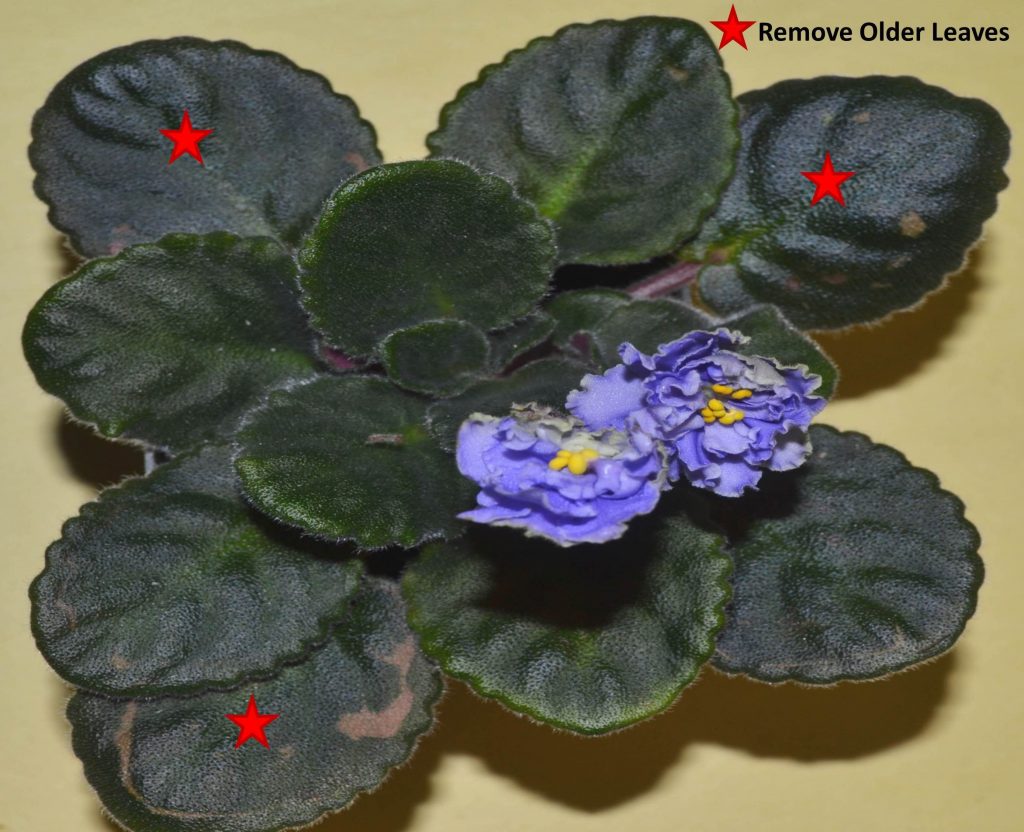

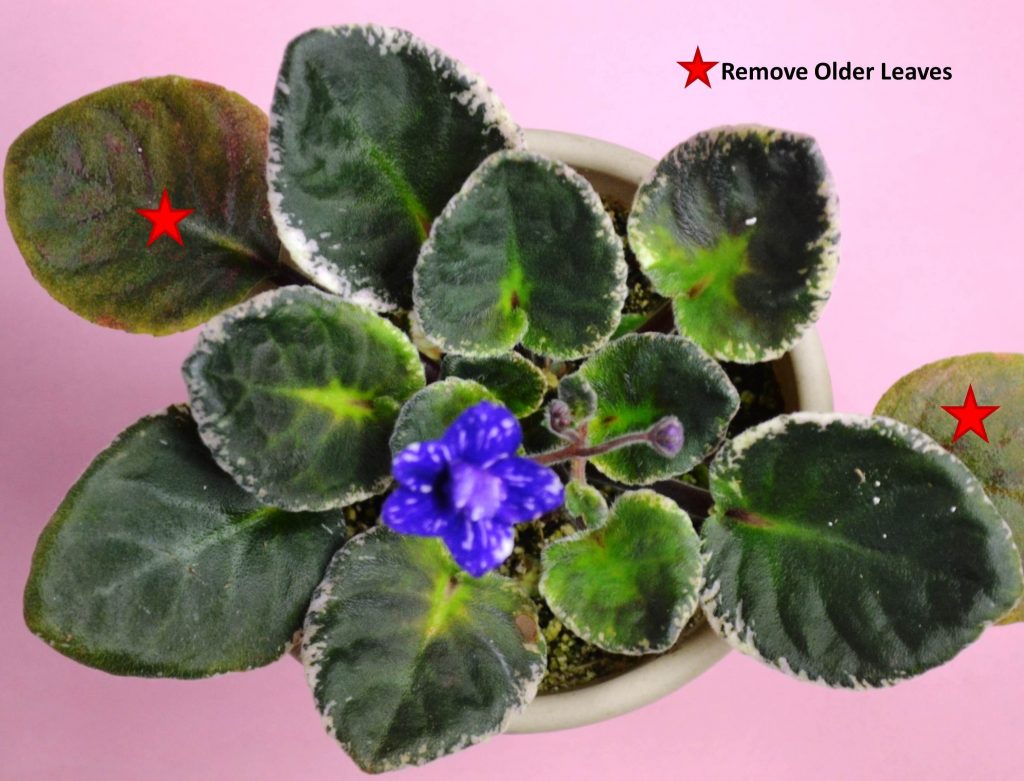
- By removing the leaves and trimming down the plant, the limited healthy root system will be able to support the smaller plant.
- Over time as the roots develop it will be able to support the growing plant.
- If the plant is too large, the smaller root system will have trouble supporting the whole plant, as the roots are trying to recover and at the same time trying to support the growth of the plant. That’s why it is helpful to remove a few leaves and allow the plant to develop with a smaller root system.
- If on further inspection the primary root stem/crown also seems moist, dark brown and mushy, then the root stub has also rotted.
- Remove this rotted root stem, by using a sharp scalpel and slicing off the rotted part of the root stem, leaving only the fresh green or red part of the stem.
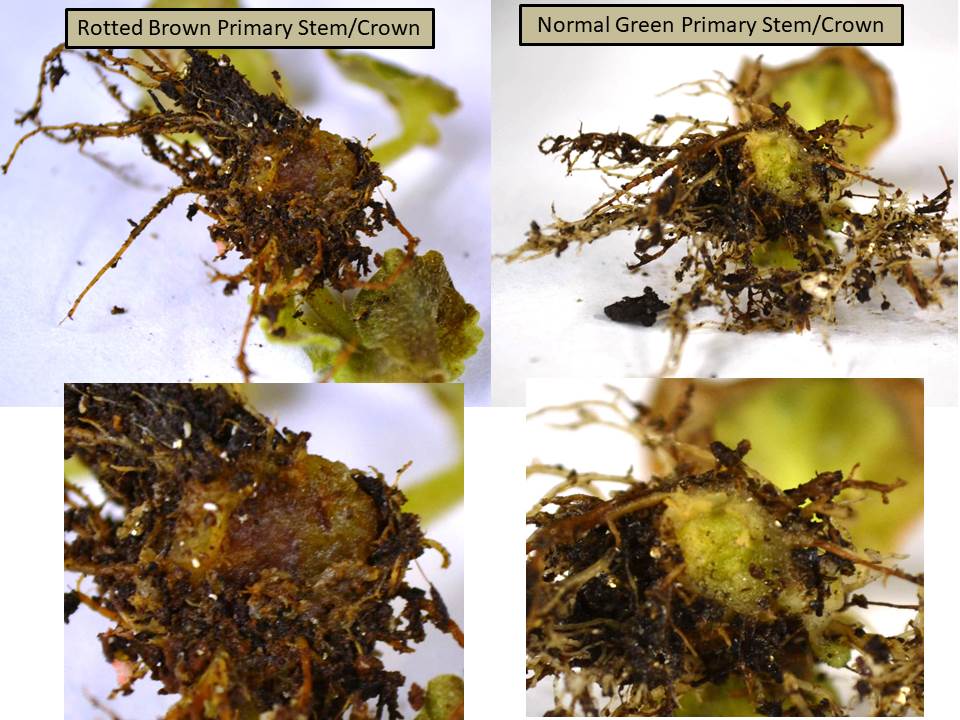
Below are perlite recommendations, useful for potting up suckers, as an additive to soil or even used a thin layer at the bottom of a pot for drainage.
- When the plant is ready to be re-potted, make sure the clean root stem is re-potted in a light airy mix. For more information on African Violet potting mix, please visit our post, “African Violet Soil/Potting Mix“.
- This can be in a moist perlite only mix or a moist 50% peat moss+ 50% perlite mix. Make sure the soil medium is not too wet, only a moist.
- Place this repotted plant in a Ziploc bag and seal to create a humid environment.
- Leave for 1-2 weeks. Then only open up one side of the bag and leave for a few more days. Then open up the bag completely and leave for a few more days. This way gently acclimatize the developing plant to the outside environment.
- Do not suddenly expose the newly potted plant to the outside environment by immediately removing the plant from the bag.
- Do this step over time, otherwise the plant which was already in shock will become more in shock and the recovery process will be delayed.
Examples of self watering pots for African Violet plants as shown below:

*Our Affiliate Programs: We are a participant in the Amazon Services LLC Associates Program, an affiliate advertising program designed to provide a means for us to earn fees by linking to Amazon.com and affiliated sites.
Though we do link to many items on Amazon out of convenience to our readers, we do also participate in other affiliate programs that also pay us a commission for any purchases you might make through our links (at no additional cost to you!).
Like this article?
Share on Facebook
Share on Twitter
Share on Linkdin
Share on Pinterest

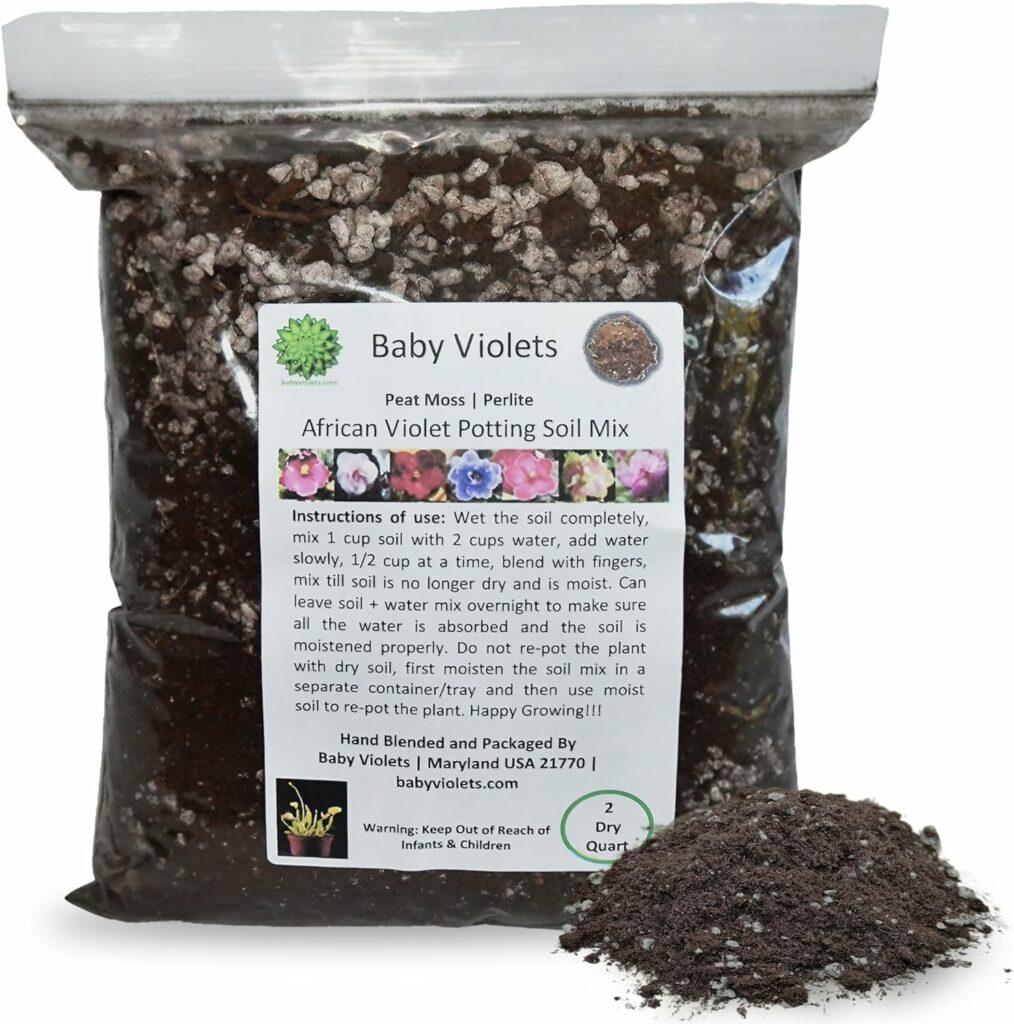
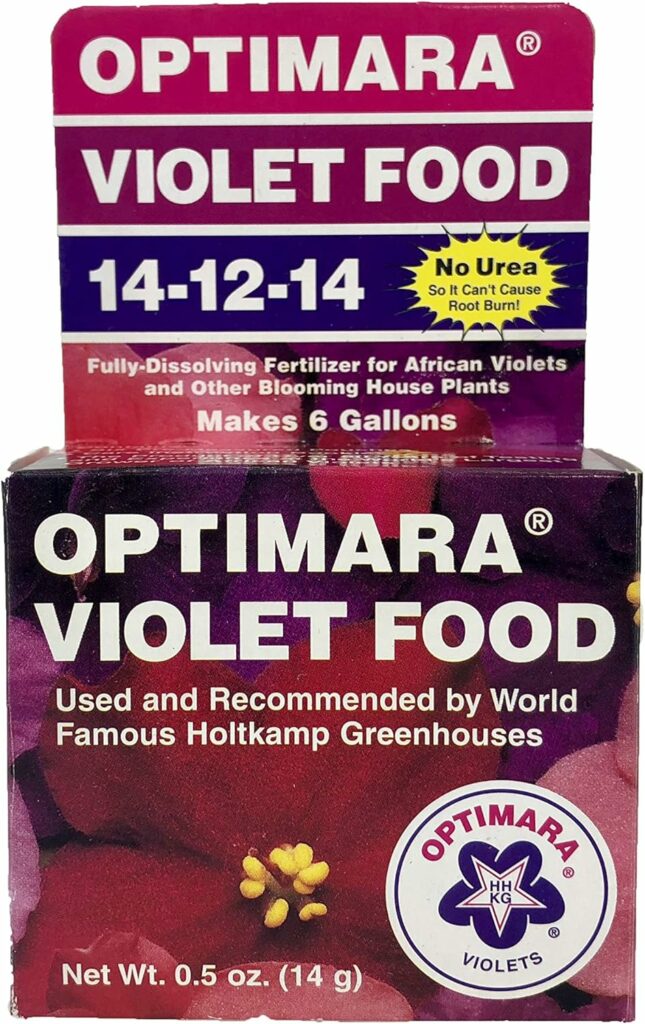
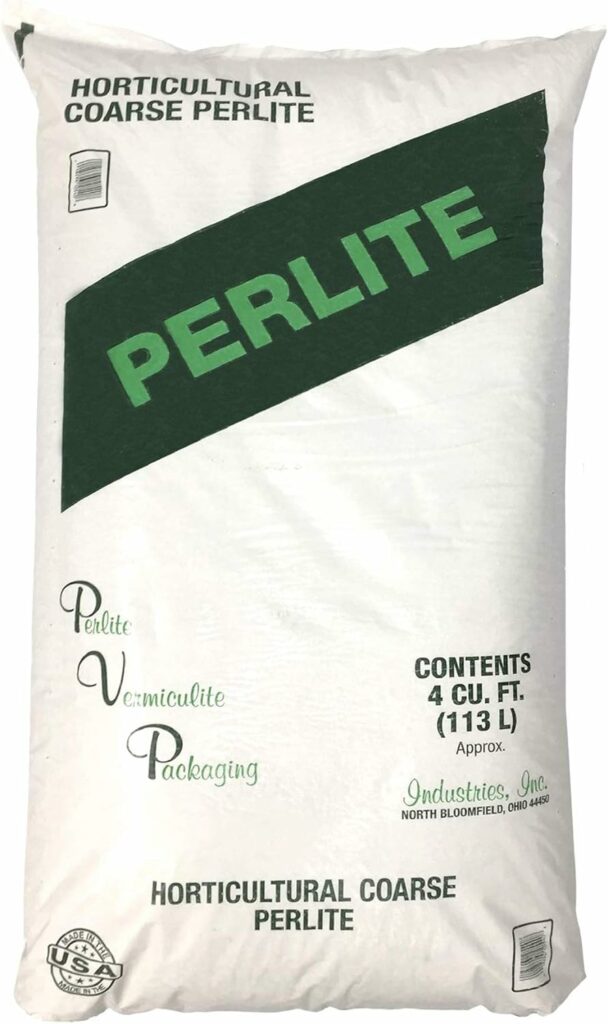
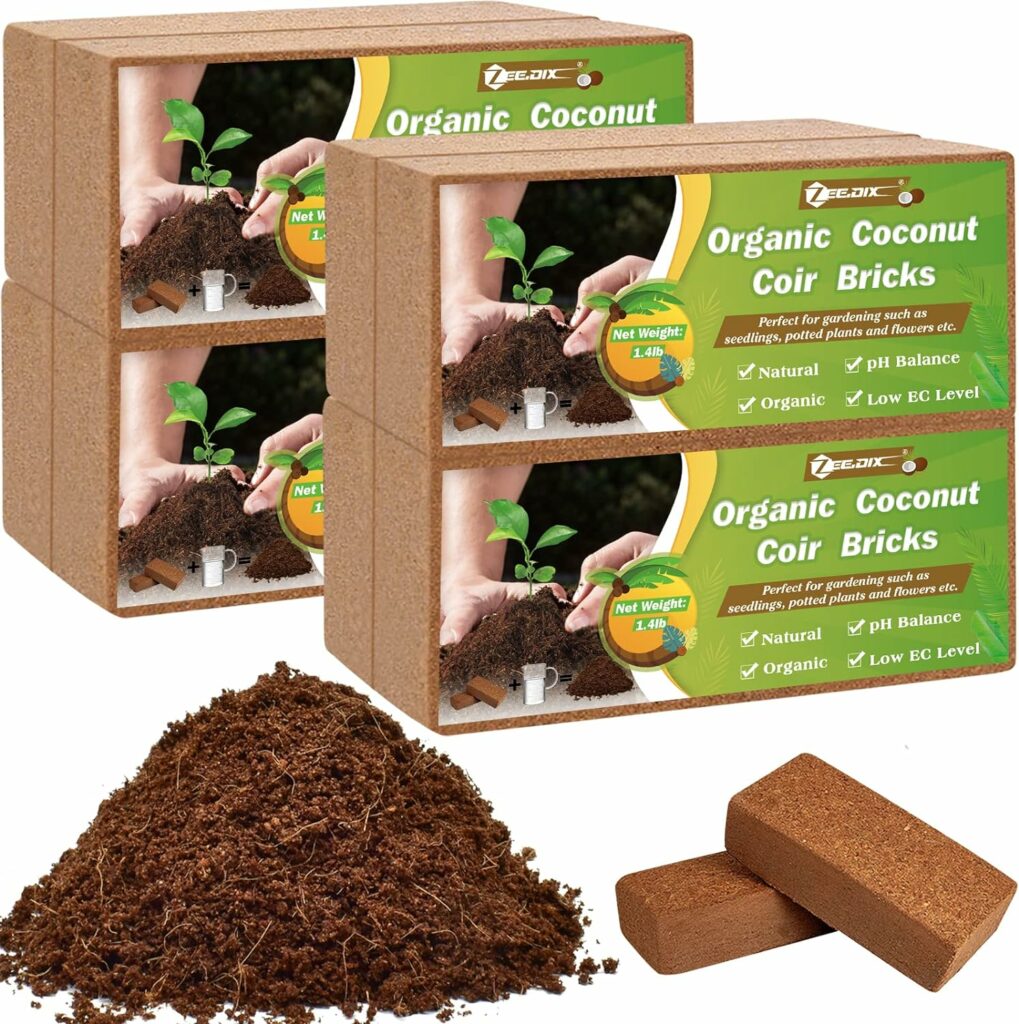
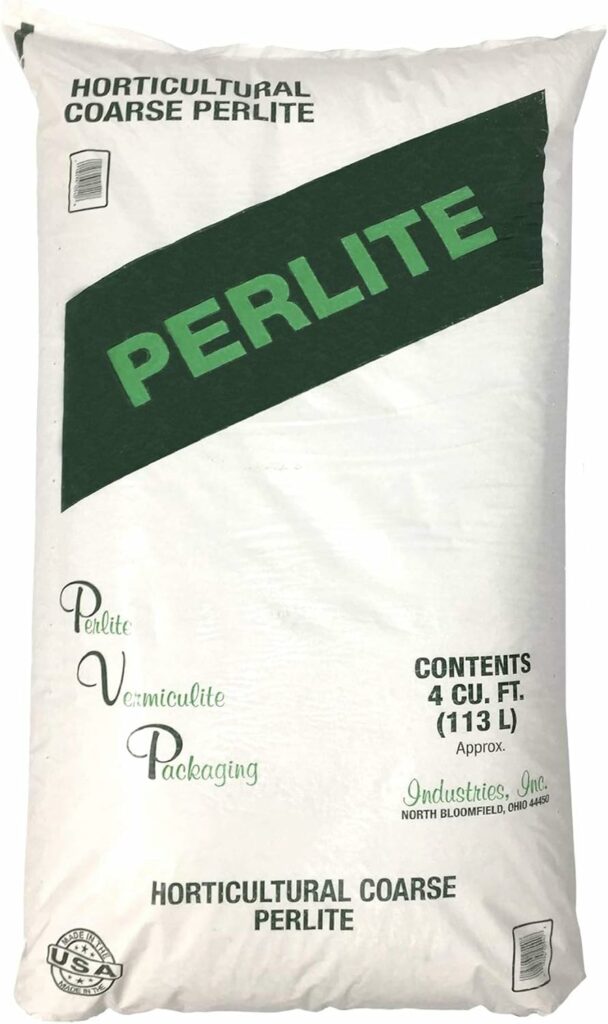
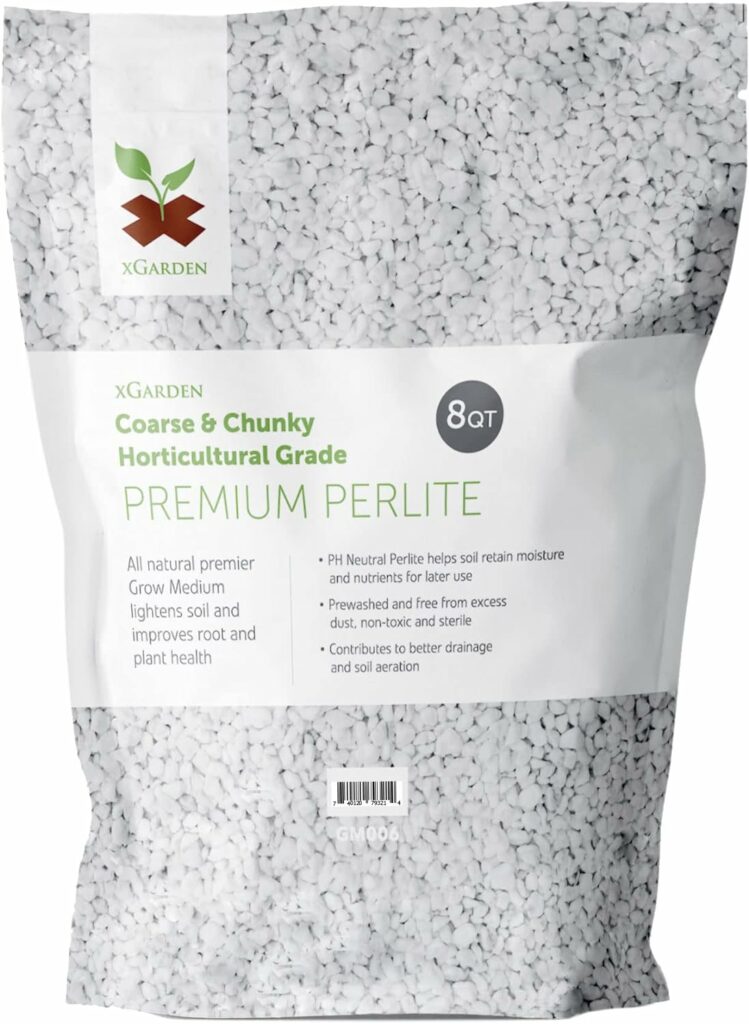
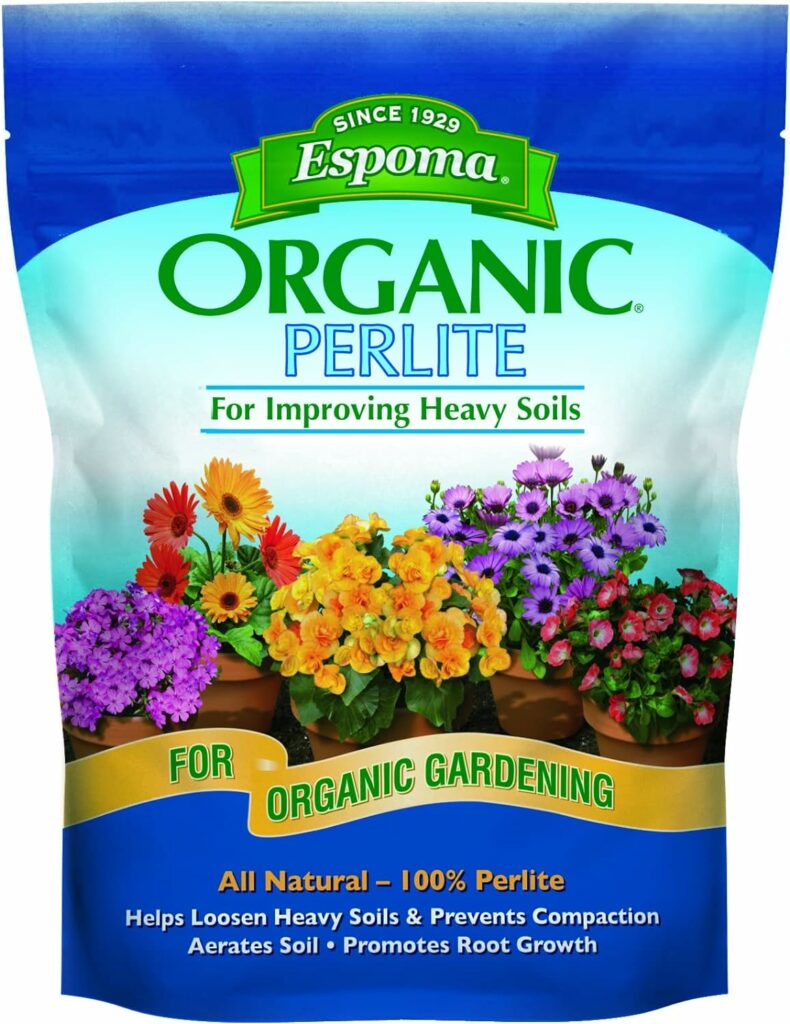
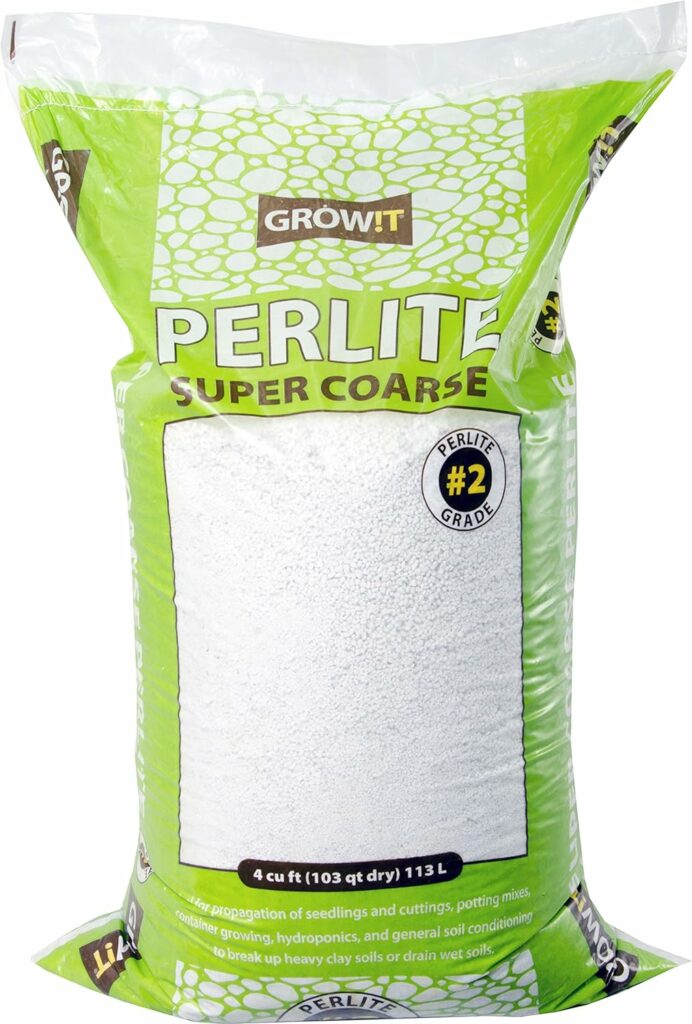

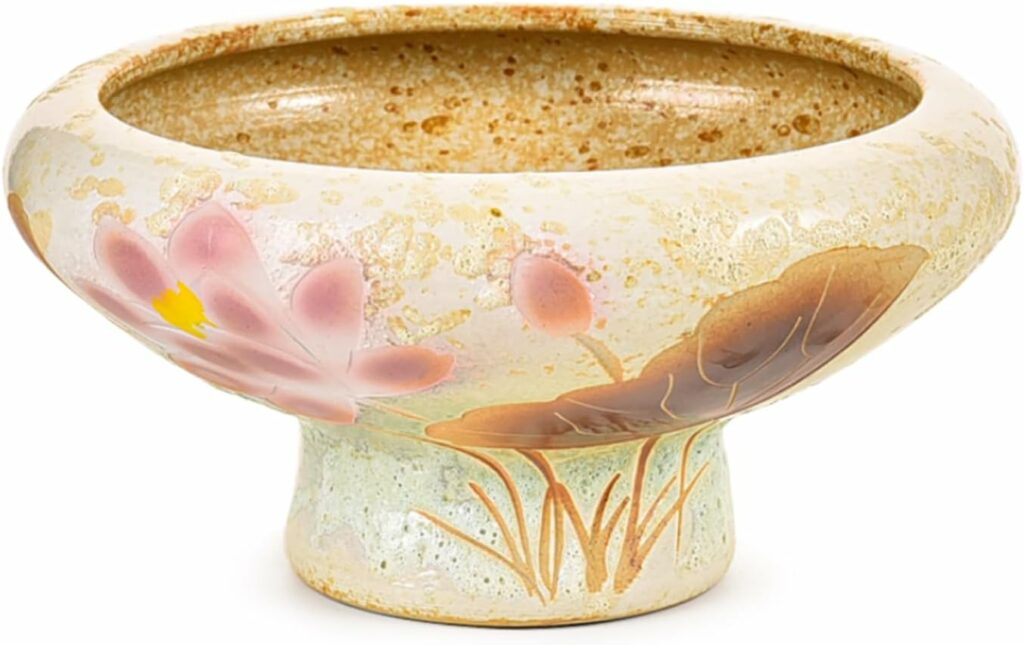

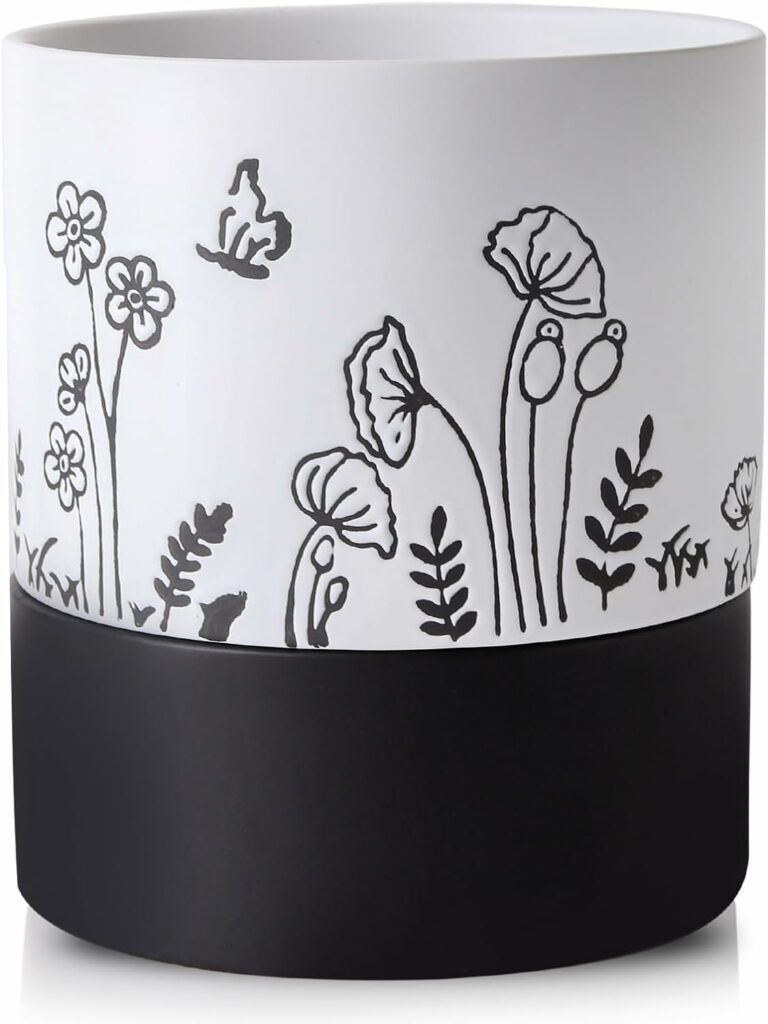

20 Responses
I can’t believe there aren’t any comments on this post yet!
Thank you so much for writing such a detailed article with so many pictures for illustration! I’ve really enjoyed browsing all the articles on this website. Amazingly helpful; thank you for all that you do!
Thank you Rachel for your kind comment. I am glad to be of help. Happy to hear that the posts were useful!, BV
Very instructive article. I’m keeping this near me! Thank you.
Thank you Maria, glad it was helpful.
BV
Hello, My Violet was absolutely Healthy and I’ve got it for three and it was gorgeous until I went for holiday for 3 days and I scared if the solid got dehydrated so I filled the under pot with water fully. As soon as I came back I noticed the outer leaves weren’t straight and the solid was wet. I put it in a warmer place and later on the condition got worse and more leaves went withered. I changed the pot and the rots were rotten and all brown and pulpy. But I washed the roots and repot my violet with better solid and now placed it in my hall where I hope to be cooler to survive. Could u please tell me how I can heal my violet? My email if nessasry email me directly plz pietroali2516@gmail.com. It’ll be great favour thanks
Hello Ali,
thank you for your question. It seems like the soil was very dry and then became wet again. Violets dont usually like going through extreme dry/ wet conditions. When you say you washed the roots, hopefully you didnt remove too many and left the rootball. Next time, just remove the rotted roots and leave the rest. For now, do not re-pot again for a while, make sure its the right pot size and can place in a plastic baggie and seal. Keep the plant away from direct sunlight, you are correct to have placed in a cooler location, it should still receive filtered sunlight. Keep it in the baggie for 2-3 weeks, it may perk up. Also, make sure to remove any wilted, brown or dead leaves. Hope this helps, best of luck,
regards,
BV
I seem to be having an issue with crown rot, which is the same organism that causes root rot. So would the treatment be basically the same, removing the dead crown tissue along with stems and leaves. Leaving only a root system to
re-generate a new crown.
Hello Jessica,
Thank you for your question. Yes, root rot can eventually spread to the crown. Yes, you can remove the leaves, the dead crown area and if the roots are good and the crown is still green and not soft to touch or mushy, you can go ahead and repot the roots. Make sure its a smaller size pot, not too large.
Hope this helps,
BV
Thank you for explaining all my problems! How do you know when to simply trim the rotted roots versus decapitation?
Back story: I bought a bunch of violets for my late-day sunny work window and all outer leaves were water logged and fell off. I’ve been trying to regulate watering (goes from wet/dry pretty quickly), but I believe some are simply rotted due to a mixture of issues you mentioned (environment shock, watering irregularities, etc.).
Hello Debbie,
thank you for your question. If the main stem of your plant is soft, mushy, looks dark brown, wet or soggy, then its time for decapitation. One way to check, is to remove the plant from the pot, gently remove some soil from the lower stem area, and see if you can feel the stem, does it feel soft, does it look dark brown/rotted? Then its probably rotted through. However, if it looks green and feels firm, then it may not have rotted all the way through. You can gently slice off a small piece of the stem from the side, and check inside, to see what it looks like, green or brown. Green means its still not rotted and brown means rotted. For the roots, if the majority of roots are bright white/grey roots and only some are dark brown, wet, then you can remove those brown roots, they are rotted. However, if the roots all seems brown, rotted, then allow the soil to dry out first then check again, it may mean you have to remove the rotted roots, check the stem and then decided whether to decapitate or not. Hope this helps, regards, BV
If the AV has crown rot and I remove some limp leaves can I use them to start new plants? I’m afraid my Blue Mist might not survive the crown rot and I hope there is some way to propagate it.
Hello Janelle,
Thank you for your question. Yes, you can use the limp leaves to start new plants, as long as they have a firm stem. The leaf stem should not be mushy or soft or rotted. If the leaf is slightly soft, brown on the top its fine, still can use. Unfortunately, there is no permanent solution to crown rot, once the plant is lost, its gone. You can control crown rot initially, by controlling your watering frequency and using a light perlite based soil. During re-potting you can also put a thin layer of coarse perlite at the bottom of the pot and then add your regular soil, this will help with drainage.
Hope this helps,
regards,
BV
i have a beautiful, healthy AV with 6 rows of leaves that flowered every 3 months. The bottom row started to droop and rot one by one, but faster than this plant’s normal so I decided to repot since i had not in a year and the stem was sticking out pretty high from the dirt. I repotted in the same pot using AV mixture soil, and was sad that the soil it had been sitting in was way wetter than I had realized. 🙁 The roots were long and dirty and I could not tell if they were rotten because they did not detach. I noticed a *few* white roots near the stem. I sat the pot in a tray of water for 10 mins to water from bottom and left the plant to acclimate. The next morning the entire bottom row of leaves were drooping! I did more research and decided maybe I shouldn’t have watered the repotting at all so I dumped it again, and yes, the soil was wet. So i repotted AGAIN in dry AV mix, took off a couple of the droopiest leaves and 4 hours later only the bottom row remains droopy. I am so sad. I want to pull it up again and check the stem but I fear I’ve already shocked it so much in the last 24 hours that I should just leave it and hope for the best. Any advice? Should I bag it since I didn’t water the new AV medium, even though the bottom row of leaves are all limp. I wish I had found this site BEFORE I started the repotting so I would have known better what to look for when I had the whole stem and roots exposed… Thanks for all your great content.
Hello,
thank you for your question. Yes, it seems like, the plant was overwatered and the dunk again may have stressed it out. You did the right thing by repotting it in dry AV mix and removing the bottom few leaves. For now, yes let it get settled down. You can place it in a baggie for 2-3 weeks. After one week, take a look at it, only from the outside, dont open the bag. If the outer leaves look droopy or moist or dead, thats ok. The center leaves and inner leaves should look green, healthy and bright. During the second week, again take a look at it from outside, if there is a lot of condensation, you can open up the bag for a few hours, wipe off the water droplets and close the bag again. If the soil seems dry, or plant wilted, you can give it very little water, just enough to moisten the top soil. At this point you can remove any lower bottom leaves that dont look good. If a lot of water drains through and collects in at the bottom of the baggie, you can get rid of the excess water and place the plant back in. During the third week, if all looks good, open up the baggie, keep bag open for another week, then during the 4th week, can remove the plant from the baggie. You can pick a day, say Monday and only check the plant once a week every Monday, that way you wont be constantly trying to see whats happening. Sometimes, plants can surprise you, though in either a good or bad way, there’s no exact formula, just trial and error. Hope this helps,
regards,
BV
I’m baffled with this AV. I’m loosing the older lower leaves one at a time. I think I overwatered about a 8 weeks ago so I followed root rot protocol and repotted in fresh dry soil. I bagged it for a week and it looked as though I had saved this AV. It proved me wrong though when after a couple of weeks and dry soil, I gave it just a sip of water. No more then a tablespoon and within a day the most mature leaf develops a black necrotic tip that creeps up the leaf toward the crown. I snip off the dying leaf before it reaches the petiole. I give it another week until the soil is dry again and a sip of water, maybe a teaspoon, and the same thing happens. I’m down to eight small leaves now and the crown is still cranking out new leaves from the center. Any thoughts would be appreciated.
Hello Mel,
Seems like your root rot is spreading. You can take out the plant from its pot and see if you can see any brown/mushy roots. If yes, snip them off gently. Try to keep the roots which look grey/white in color. If your crown is producing new leaves, that’s a good sign. As long as they are bright green/healthy. If they seem mushy and limp, then the plant may be lost to root rot. Give it some time, it may still recover in the next 3-4 weeks. Hope this helps, best of luck!
Very impressive with the information. I like to no what to do when you have a very tight crown of leaves that are curl back and looks very fuzzy. Please help me
Hi Cheryl,
thank you for your question. You can check this article out for more info, http://www.babyviolets.com/tight-crowns-on-african-violet-plants/ If you have any additional questions please let me know,
regards, BV